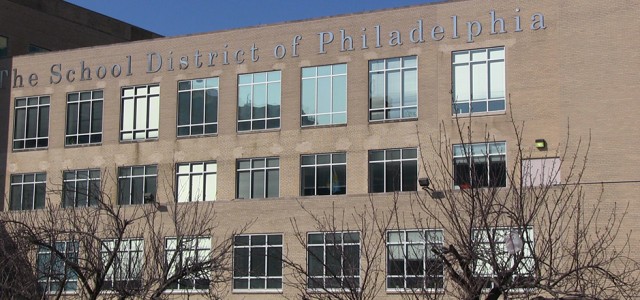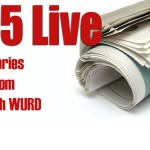There are a lot of things that you probably know about me thanks to the bio that’s on my page here on SolomonJones.com.
But one of the things not included in my bio is that I, at 50, still try and catch “Sesame Street” as often as possible. I don’t have any kids, and my nieces and nephews have all outgrown the show, but if it’s a choice between a “Real Housewives” marathon and “Sesame Street”, Grover, Elmo, Big Bird and Oscar the Grouch are going to win every time.
“Sesame Street” is because of how much of what it taught me as a kid I still use today. It’s even provided me with a way to get into the subject of the School District of Philadelphia, the resources available to it, how those resources are utilized, and how the phrase “what’s best for the kids” gets twisted into a pretzel along the way.
I bring this up because one of the reasons that I still love “Sesame Street” is because of how much of what it taught me as a kid I still use today. It’s even provided me with a way to get into the subject of the School District of Philadelphia, the resources available to it, how those resources are utilized, and how the phrase “what’s best for the kids” gets twisted into a pretzel along the way.
So…
This column on School Resources is brought to you by the letters S, D, and P and by the numbers $641 million, $35 million, $161 and 269.
As you get through this column, they’ll start to make sense.
The donation heard round the world
Everyone has no doubt heard about the $35 million that the Philadelphia Schools Partnership wants to give the SDP (there’s our letters!) in the hopes of getting the School Reform Commission to approve some, if not all, of the 39 charter school applications coming before it at a special meeting on Feb. 18.
But let’s keep it real. While that $25 million will get these charters started…somewhat…where is the rest of the money for these schools going to come from? Has someone found a bunch of change under the SDP couch cushions that we don’t know about?
Or at least that’s what PSP wants most of it used for. They’re willing to let the district use $10 million for whatever else it wants to.
On paper, that looks like a lot of money. I know that I don’t have $35 million just lying around.
But let’s keep it real. While that $25 million will get these charters started…somewhat…where is the rest of the money for these schools going to come from? Has someone found a bunch of change under the SDP couch cushions that we don’t know about?
I mean hey, the non-profit group Public Citizens for Children and Youth came out with a report a couple of weeks ago that says that the district shouldn’t approve ANY more charters because the good ‘ole days of the Commonwealth reimbursing school districts for their spending on charter schools are over and the district can’t afford to create anymore.
The school deficit matters
(The $80 million deficit in the district’s preliminary budget, and the fact that it the Commonwealth Court ruled that it couldn’t cancel its contract with the Philadelphia Federation of Teachers in hopes of helping to close it, would bear this out.)
Besides, when you consider that more than a few charter schools, most notably and recently the Walter D. Palmer Leadership Partners Charter School, have closed due to a combination of financial shenanigans and a “we don’t have to follow the rules because we’re innovative and no one is going to catch us for years because we’re largely unregulated” attitude, it’s enough to make The Count not want to count these things.
And this is all supposed to be about the best interests of the kids, right?
So let’s talk about another one of our numbers: 269.
In case you’re wondering, 269 is the number of schools in the School District of Philadelphia that don’t have a working library. I got this number by subtracting the 280 schools in the district from the 11 schools that had libraries according to a story in the Philadelphia Inquirer.
Now maybe this is just me bringing logic into a situation that’s probably going to resist it tooth and nail, but wouldn’t it make more sense, and probably cost a lot less money, if the Philadelphia Schools Partnership gave the District the money to create 269 new libraries instead of using it to create new charter schools the district’s budget can’t sustain?
But that’s enough about that for now.
Here’s another number: $641 million.
What do the numbers mean?
That rather large number represents the amount in scholarships, in-kind services and programs that the City of Philadelphia’s colleges and universities, places like St. Joseph’s, Drexel, LaSalle, Temple, Community College of Philadelphia and the University of Pennsylvania, give to the School District of Philadelphia every year, according to a report commissioned by the Philadelphia Higher Education Government Relations Officers Group.
The City of Philadelphia itself has kicked in $300 million over the last four years, money that has insured that schools open on time.
(For more insight into that, Google “Tom Corbett+Education Cuts+Why You’re No Longer Governor”)
City Council President Darrell Clarke did what anyone who gives someone $300 million ought to do: see if the district is getting what it’s paid for. So Clarke went to visit the Spring Garden Elementary School in North Philadelphia.
He didn’t like what he saw.
“I went into the Spring Garden School and saw a box with a red cross on it,” Clarke said. “The school didn’t have a nurse, so the teachers were being shown how to put on Band-Aids. That box was supposed to be a substitute for a nurse.”
Council President Clarke saw what many of us have seen over the years: the difference in resource allocation in the district. While some schools, like the nationally-known Penn Alexander School, are flush with resources, other schools, like the Anna Lane Linglebach Elementary School in Germantown are trying to provide a good education for their students with only $161 in discretionary funds to use for the school year.
“We can’t have a situation where there’s a Penn Alexander, and yet there are parts of the city where you have no resources whatsoever,” Clarke said. “We can’t have a situation and a school district like we have with all of the world-class universities we have here. It doesn’t make sense.”
“We can’t have a situation where there’s a Penn Alexander, and yet there are parts of the city where you have no resources whatsoever,” Clarke said. “We can’t have a situation and a school district like we have with all of the world-class universities we have here. It doesn’t make sense.”
So to try and combat that, Clarke has proposed the SUPER (School-University Partnerships on Educational Resources) program. This program would spread that $641 million evenly throughout the district…
While this is a great idea, it may not be feasible legally. You see, once upon a time, during the Mayoral Administration of Edward Rendell, there was a thing called “payment in lieu of taxes”. This was what non-profits paid to offset the costs of city services they used, but didn’t pay for in taxes.
Commonwealth Act 55 made PILOTs illegal for agencies that could prove that they were true non-profits. I don’t know of any non-profit agencies that designation truly fits, but okay.
But here’s the thing.
We’ve got to try something because let’s face it, the kids need stuff if they’re going to learn what they need to know.
Using the resources that we have here in the city in the best interests of our kids and schools would make the city a lot better off.
Even Mr. Snuffleupagus understands that…and I’m still not sure what he actually is…
 Denise Clay is a veteran journalist, a former adjunct professor, and an active member of the National Association of Black Journalists. She is a regular contributor to Solomonjones.com. Click here to learn more about Denise.
Denise Clay is a veteran journalist, a former adjunct professor, and an active member of the National Association of Black Journalists. She is a regular contributor to Solomonjones.com. Click here to learn more about Denise.








